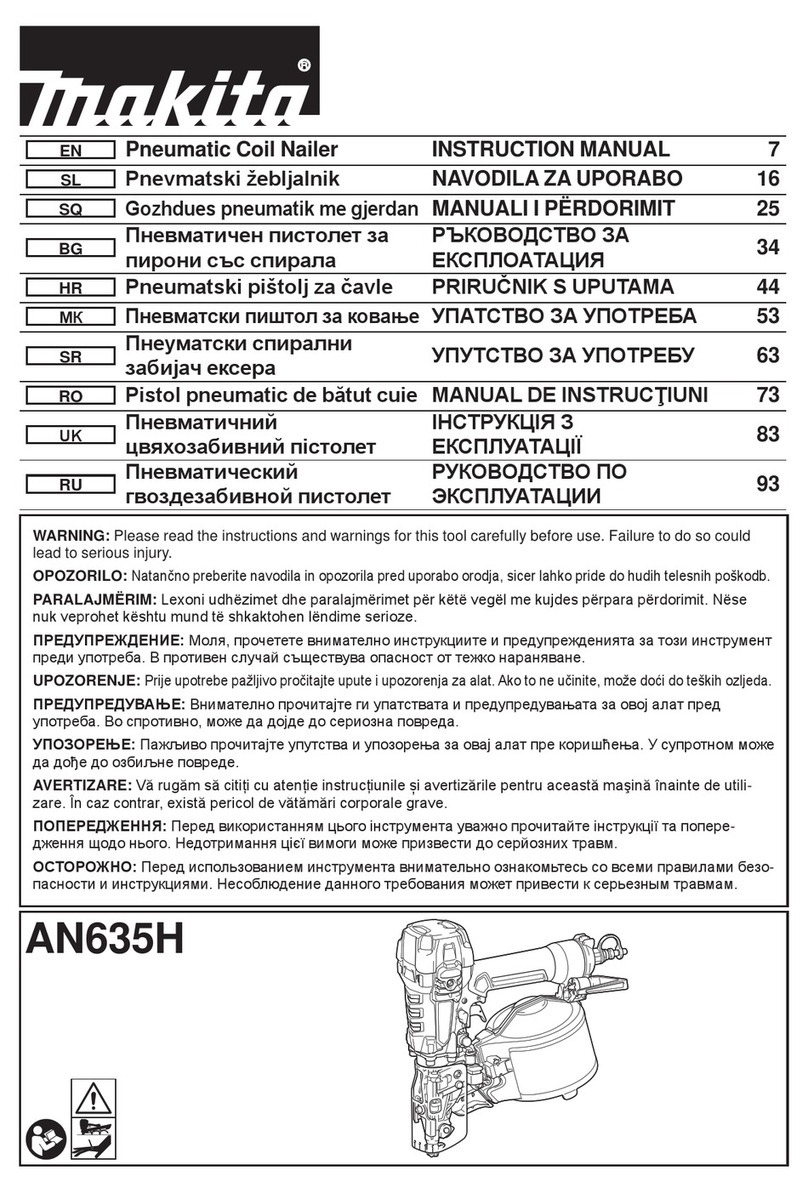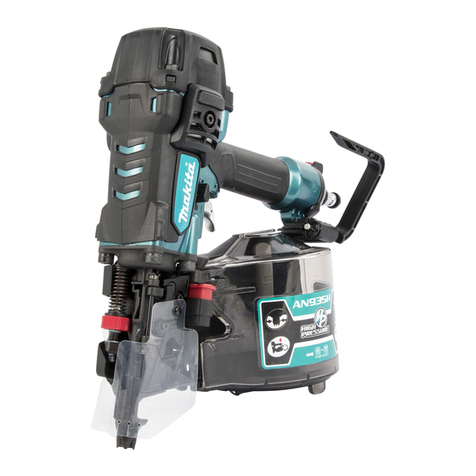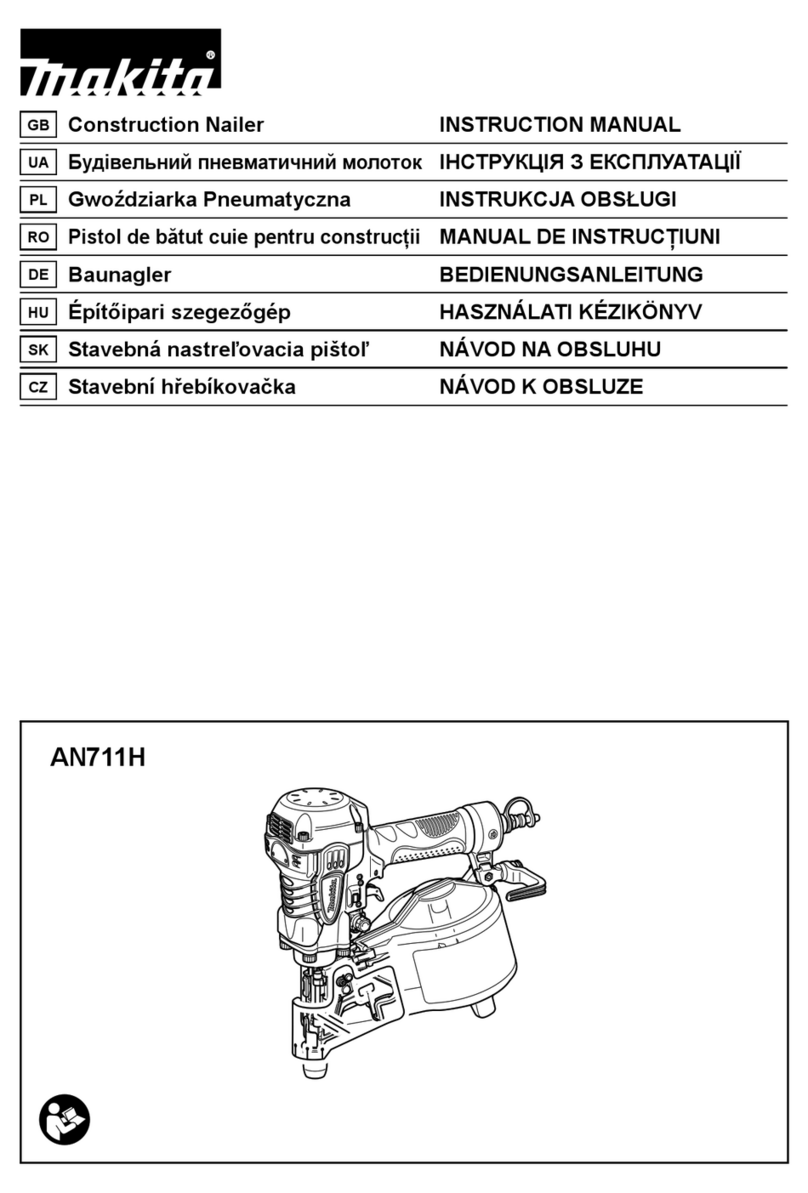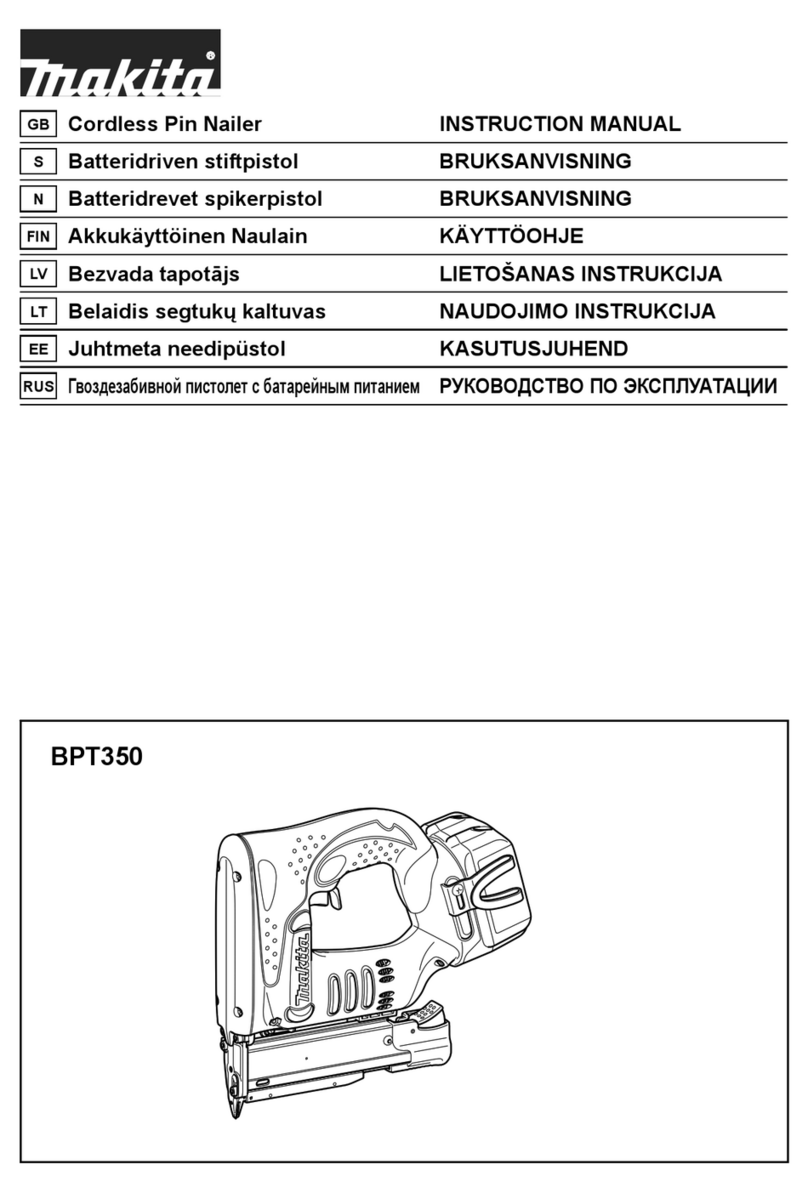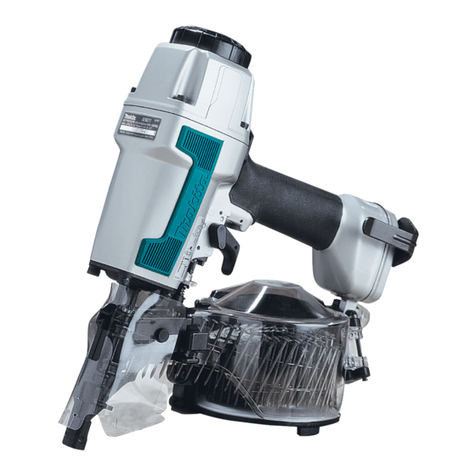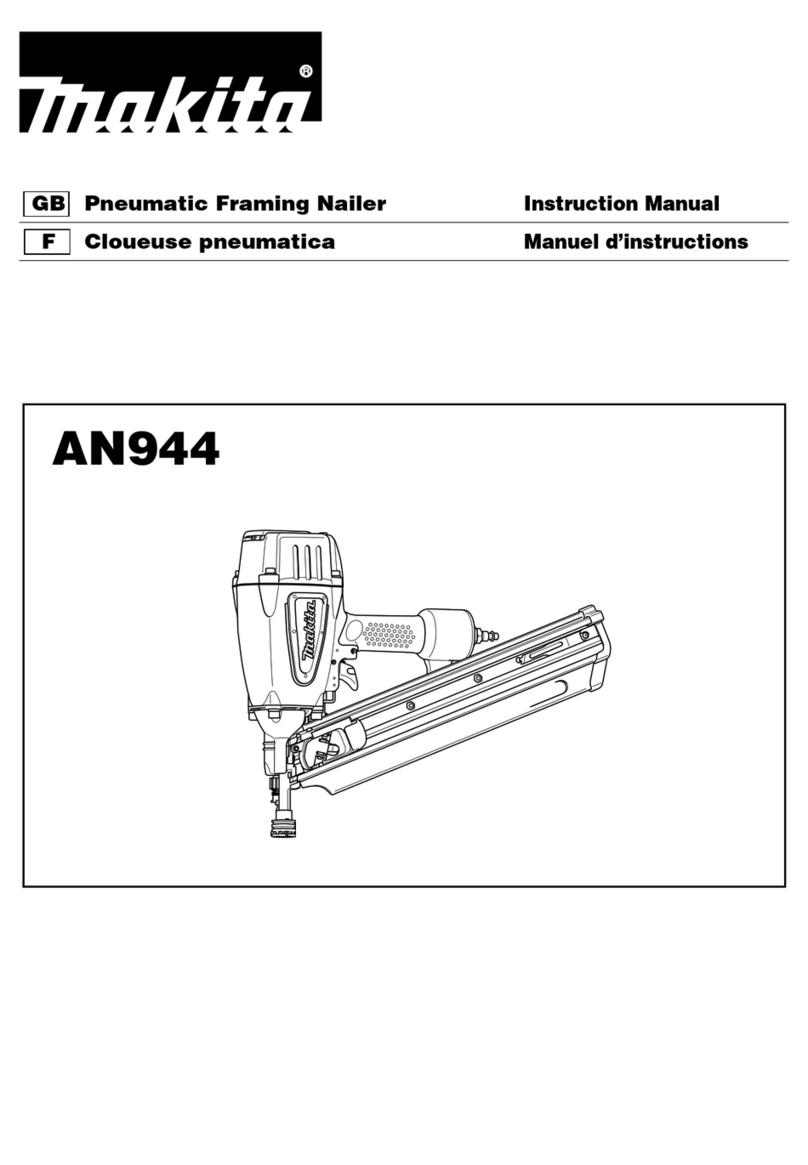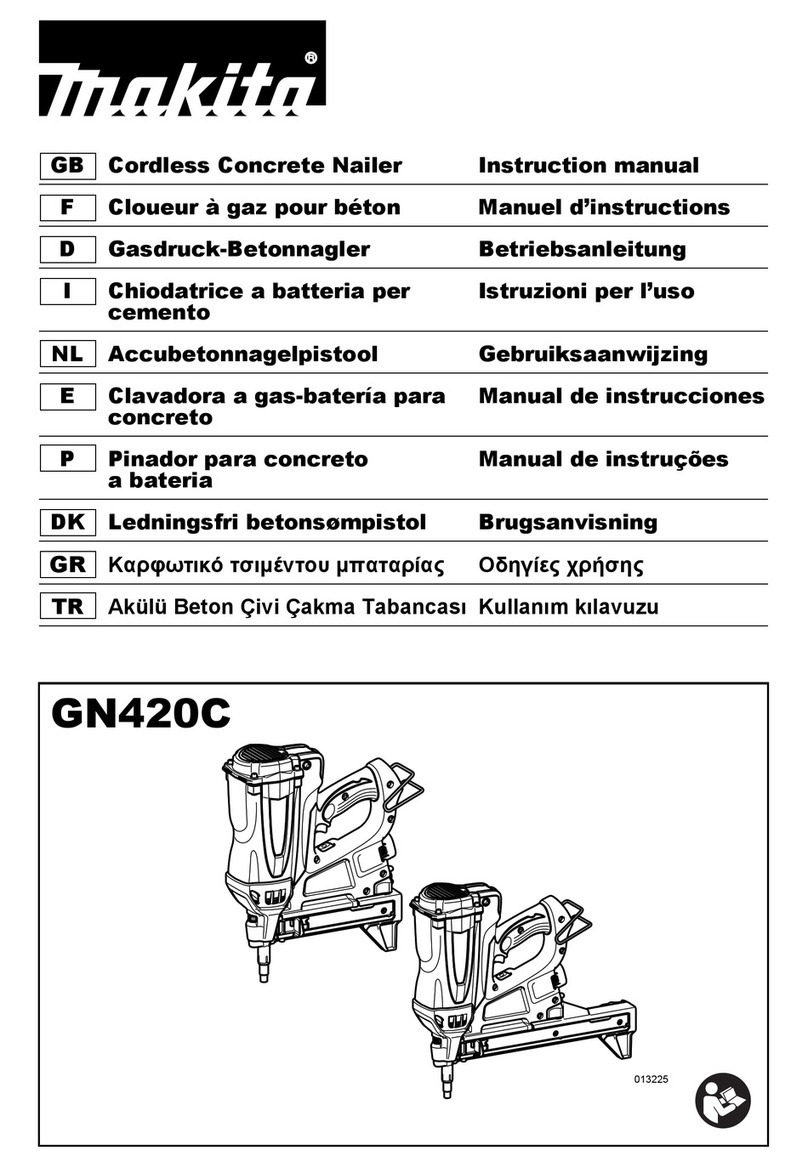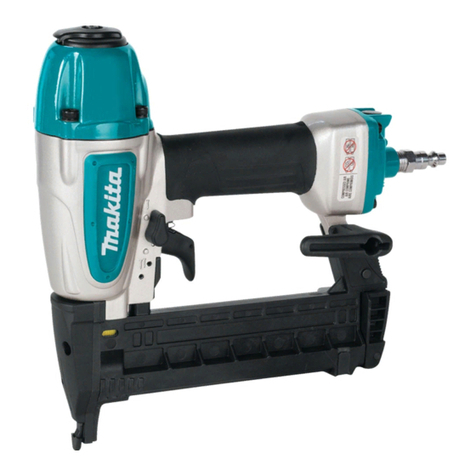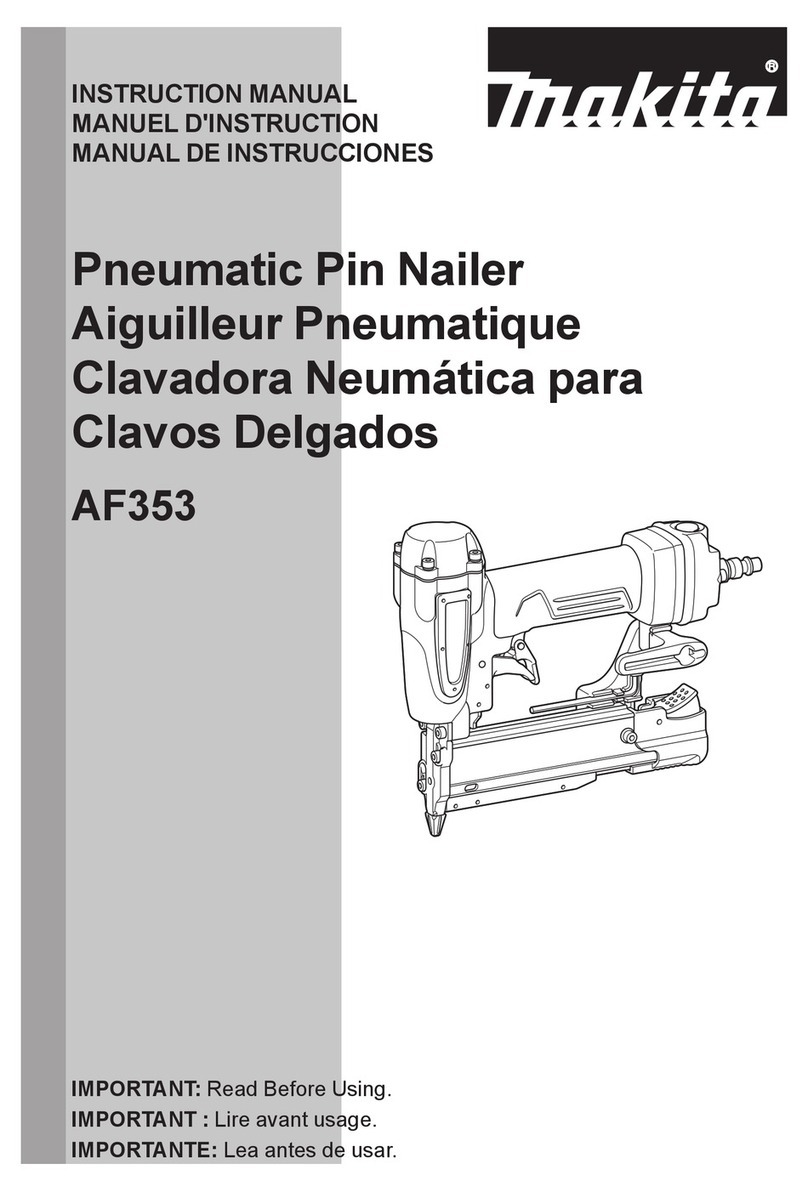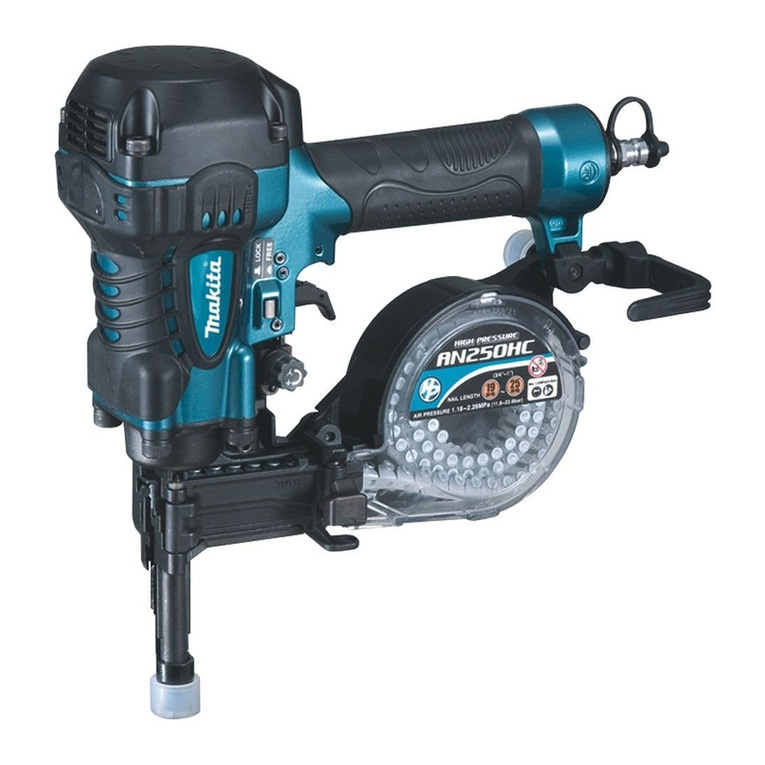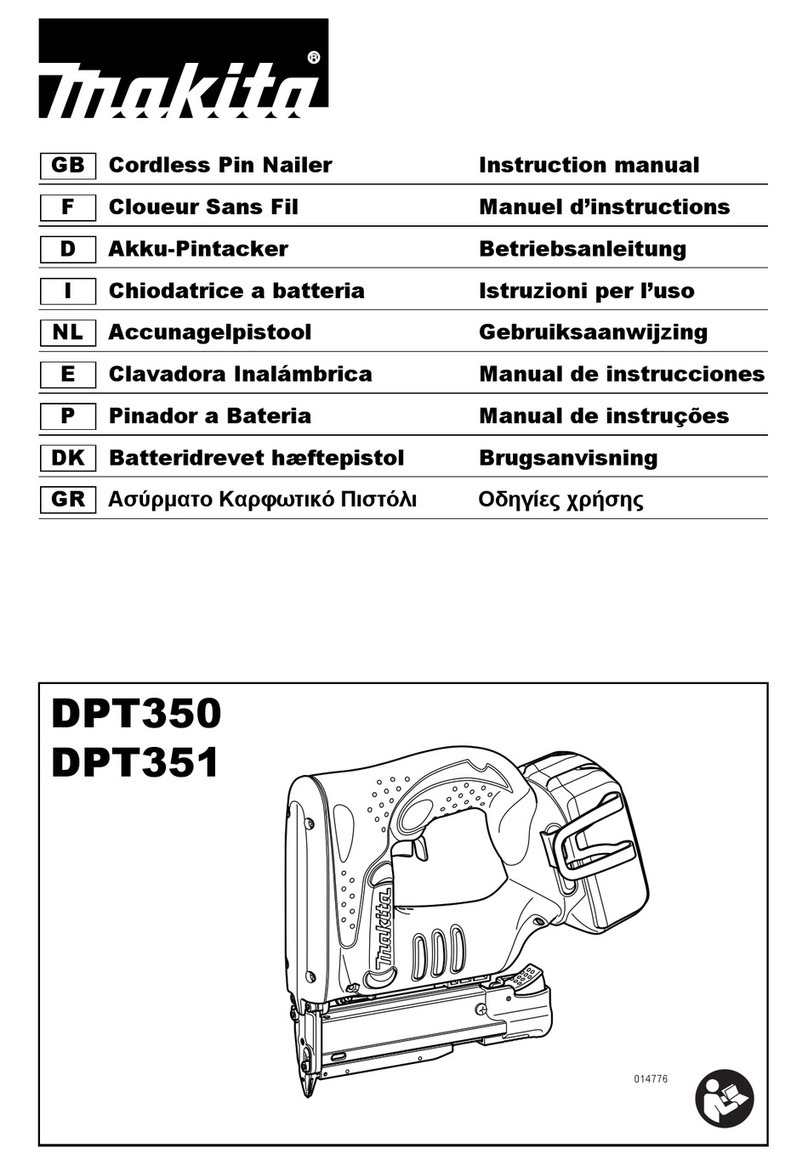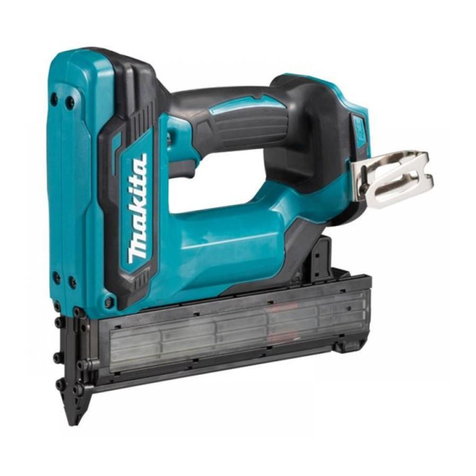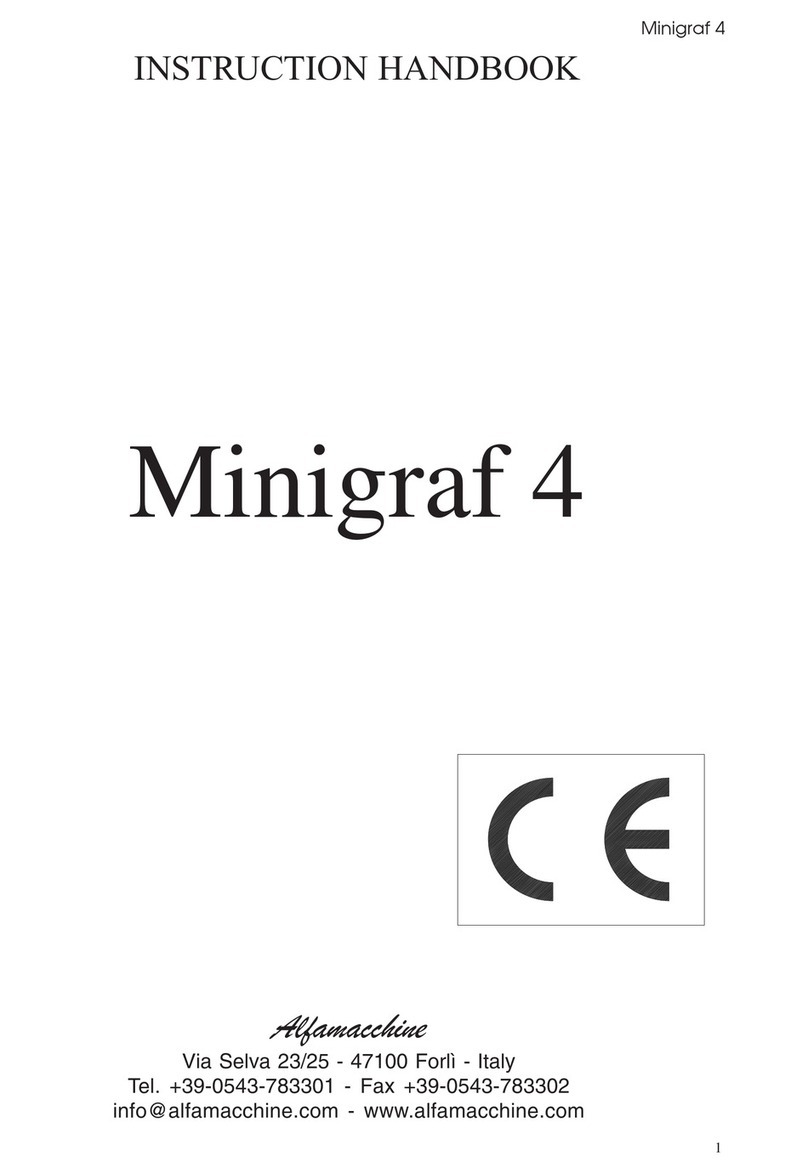
4
pressure (see SPECIFICATIONS).
• Never use the tool with other than compressed air.
If bottled gas (carbon dioxide, oxygen, nitrogen,
hydrogen, air, etc.) or combustible gas (hydrogen,
propane, acetylene, etc.) is used as a power
source for this tool, the tool will explode and cause
serious injury.
• Always check the tool for its overall condition and
loose screws before operation. Tighten as
required.
• Make sure all safety systems are in working order
before operation. The tool must not operate if only
the trigger is pulled or if only the contact arm is
pressed against the wood. It must work only when
both actions are performed. Test for possible faulty
operation with nails unloaded and the pusher in
fully pulled position.
• Check walls, ceilings, floors, roofing and the like
carefully to avoid possible electrical shock, gas
leakage, explosions, etc. caused by striking live
wires, conduits or gas pipes.
• Use only nails specified in this manual. The use of
any other nails may cause malfunction of the tool.
• Never use fastener driving tools marked with the
symbol "Do not use on scaffoldings, ladders" for
specific application for example:
−when changing one driving location to
another involves the use of scaffoldings,
stairs, ladders, or ladder alike constructions,
e.g. roof laths;
−closing boxes or crates;
−fitting transportation safety systems e.g. on
vehicles and wagons.
• Do not permit those uninstructed to use the tool.
• Make sure no one is nearby before nailing. Never
attempt to nail from both the inside and outside at
the same time. Nails may rip through and/or fly off,
presenting a grave danger.
• Watch your footing and maintain your balance with
the tool. Make sure there is no one below when
working in high locations, and secure the air hose
to prevent danger if there is sudden jerking or
catching.
• On rooftops and other high locations, nail as you
move forward. It is easy to lose your footing if you
nail while inching backward. When nailing against
perpendicular surface, nail from the top to the
bottom. You can perform nailing operations with
less fatigue by doing so.
• A nail will be bent or the tool can become jammed
if you mistakenly nail on top of another nail or strike
a knot in the wood. The nail may be thrown and hit
someone, or the tool itself can react dangerously.
Place the nails with care.
• Do not leave the loaded tool or the air compressor
under pressure for a long time out in the sun. Be
sure that dust, sand, chips and foreign matter will
not enter the tool in the place where you leave it
setting.
• Do not point the ejection port at anyone in the
vicinity. Keep hands and feet away from the
ejection port area.
• When the air hose is connected, do not carry the
tool with your finger on the trigger or hand it to
someone in this condition. Accidental firing can be
extremely dangerous.
• Handle the tool carefully, as there is high pressure
inside the tool that can be dangerous if a crack is
caused by rough handling (dropping or striking).
Do not attempt to carve or engrave on the tool.
• Stop nailing operations immediately if you notice
something wrong or out of the ordinary with the
tool.
• Always disconnect the air hose and remove all of
the nails:
(9) When unattended.
(10) Before performing any maintenance or repair.
(11) Before cleaning a jam.
(12) Before moving the tool to a new location.
• Perform cleaning and maintenance right after
finishing the job. Keep the tool in tip-top condition.
Lubricate moving parts to prevent rusting and
minimize friction-related wear. Wipe off all dust
from the parts.
• Do not modify tool without authorization from
Makita.
• Ask Makita's Authorized service centers for
periodical inspection of the tool.
• To maintain product SAFETY and RELIABILITY,
maintenance and repairs should be performed by
Makita Authorized Service Centers, always using
Makita replacement parts.
• Use only pneumatic tool oil specified in this
manual.
• Never connect tool to compressed air line where
the maximum allowable pressure of tool cannot be
exceeded by 10 %. Make sure that the pressure
supplied by the compressed air system does not
exceed the maximum allowable pressure of the
fastener driving tool. Set the air pressure initially to
the lower value of the recommended allowable
pressure.
• Do not attempt to keep the trigger contact element
depressed with tape or wire. Death or serious
injury may occur.
• Always check contact element as instructed in this
manual. Nails may be driven accidentally if the
safety mechanism is not working correctly.
